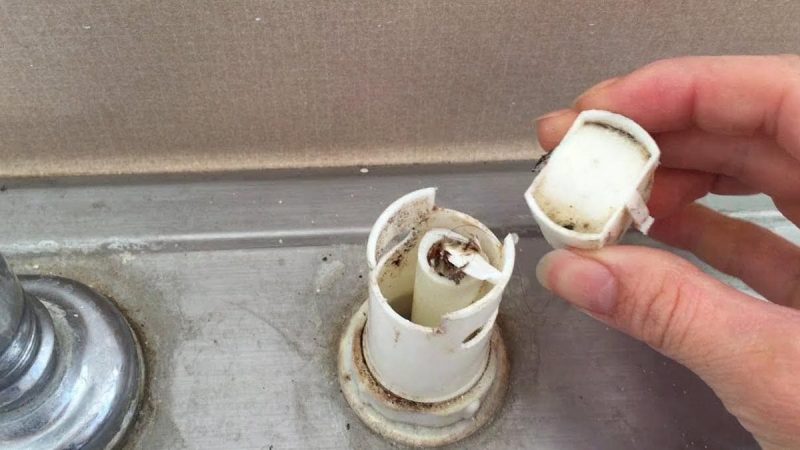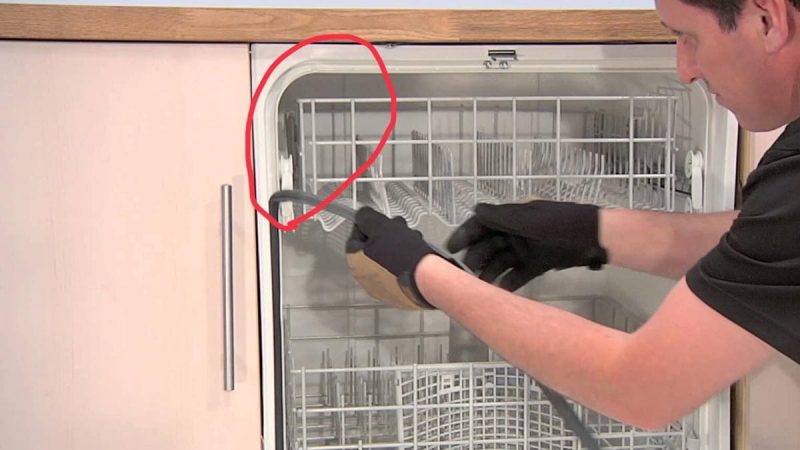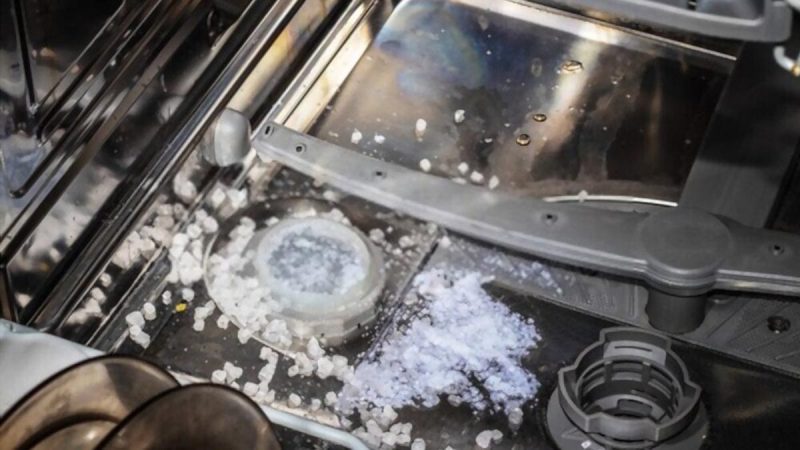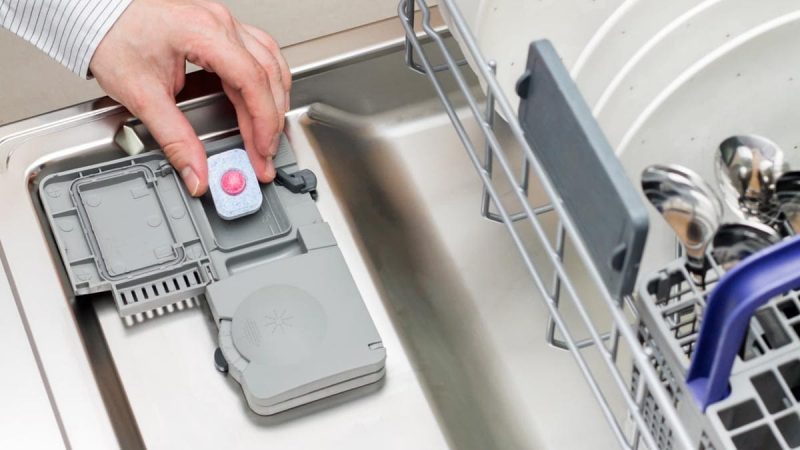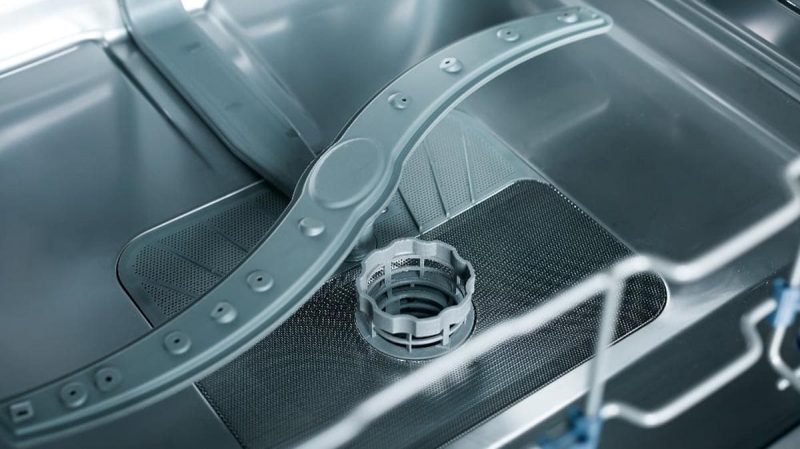It is important to pay attention to household appliances. If some kind of failure appears or it starts to work incorrectly, diagnostics with subsequent repair are most likely required. Sometimes you can get away with fixing software errors, but often you need to replace certain parts that have worn out. If you began to notice that water began to run from under the dishwasher door, there may be several reasons for this. Do not ignore the problem, because constant smudges can ruin the flooring and lead to more expensive repairs in the future. We offer to consider the common causes of a leaking dishwasher, and also find out how to deal with problems on your own.
Air gap blocking
Not every model has an air gap. In dishwashing technology, it is necessary so that the used water does not fall back into the tank of the machine when a blockage appears in the drainage system.
Before you start inspecting household appliances and making repairs, you need to disconnect it from the network and turn off the taps. This will avoid injury and flooding.
To find out if there is an air gap in your model, you need to look at the sink. There should be a fitting with holes near the faucet. If there are such elements, then there is an air gap. When it becomes blocked or clogged, water may leak through the door. Fixing the problem is easy. To do this, take the following steps:
- Unscrew the gap cover next to the sink.
- Clean it of foreign objects that may have entered as a result of numerous drains.
- Inspect the hose for blockages and clean if necessary.
- Replace all elements.
- Run a test run.
If the air blockage is blocked, water will flow out through the door. These recommendations will help you deal with the problem in 15 minutes.
Worn door gasket
This problem often occurs in household appliances that have served for several years. The rubber seal wears out over time. It is he who prevents leakage through the door when the dishwashing cycle is in progress. If the integrity of the seal is broken, or it has become loose as a result of natural wear, then you will notice puddles after each use of household appliances. Also, the cause may be food residues that fall under the seal and prevent it from performing its direct functions.
If the case is in the seal, then you need to check its integrity. It might just be a cleanup. Otherwise, the gasket will need to be replaced. This can be done without the involvement of specialists, because the work does not require special knowledge and special equipment. The replacement consists of several steps:
- Open the door.
- Pull on the seal to remove it.
- Install a new gasket pre-ordered for your model.
You can use the technique right away. No additional sizing or waiting is required. Thus, you can save time and money. Without waiting for the wizard, you can buy a seal yourself, replace it, and deal with leakage through the door.
Blockage in the drain system
Although almost all models have a grinder, over time, pieces of food can clog the drainage system. Also, the equipment used for years begins to become clogged with fat deposits, food particles, detergents, etc. If this is the reason for the leakage, then you can fix the problem yourself without calling the master.
If you are not at all familiar with the device of household appliances, it is better to use the services of a qualified specialist. Even a simple disassembly of the machine can lead to even more damage and costly repairs. Often, independent attempts to fix a malfunction completely make the equipment unrepairable.
Since the gasket in the door is not designed for such volumes of water that are retained in the machine due to a blockage in the drain system, the water begins to seep to the floor. Try cleaning the drain system to get rid of the problem by following the step-by-step algorithm of actions:
- Disconnect the equipment from the network and turn off the taps.
- Remove the bottom shelf to provide access to the required items.
- Remove and clean the filter.
- Clean out the drain hose.
- Pour the drain system with a solution of 1 tbsp. l. baking soda and 2 tbsp. l. white vinegar.
- Replace all elements and run a trial run.
If the problem really was in the blockage of the drainage system, then these actions will help to quickly get rid of it. After removing the blockage, the machine will not leak, because the water will leave in normal mode at the desired speed.
Dishwashing detergent not suitable
Few people know, but not every household product is suitable for a dishwasher. An incorrectly selected item may cause water to leak through the door. Although the principle of action and the composition of many dishwashing detergents are similar, a replacement can help get rid of leaks. It’s all about the foam.
A simple dishwashing liquid under the tap has a special composition to instantly foam. It is not suitable for dishwasher. Moreover, specialized products for dishwashers practically do not produce foam, because this prevents the equipment from working normally. Foam can build up in the drain system and in the tank, causing liquid to flow out the door.
If you run out of car cleaner, try using the following, no less effective solution, by the way:
- Pour baking soda into the dispenser (approximately one third of the volume of the dispenser).
- Drop a couple of drops of regular detergent, no more.
- Start a dishwashing cycle.
This amount of dishwashing detergent will be enough, and soda will not only help to wash everything qualitatively, but will also muffle the formation of foam.
Sprinkler out of order
In any model there are special sprinklers, thanks to which all dishes are washed evenly and become clean. A blockage or breakage of this element may cause water to leak through the door.
To eliminate this problem, you need to remove the sprinkler, clean it from possible blockages. If it is clean but not working, then replace it with a new one. It is easily unscrewed and twisted, so there will be no problems with this.
Float switch broken
Many models are equipped with special floats that prevent the machine from overflowing. As soon as there is more water than it should be, a shutdown is triggered. Such a switch helps to avoid flooding, because the seal in the door will not be able to hold all the liquid when the machine overflows. For obvious reasons, everything will pour on the floor. Thus, the float switch is activated when needed.
If this part fails, the machine does not receive a signal that there is too much water in the tank, the switch does not work, and accordingly, water begins to flow out through the door. It is unlikely that you will be able to replace this element yourself. In this case, it is better to call a specialist.
Inlet valve not working
The valve that controls the water supply can also wear out, break down or accumulate deposits over time, especially if the area has very hard water. In this case, it will not close when necessary, the machine will continue to fill with water, which will lead to leakage.
The inlet valve can be replaced by yourself. It’s unlikely to be repairable. If you are not sure that you can handle the replacement yourself, it is better to contact a specialist.
When you begin to notice that water is leaking through the machine door, do not ignore the problem. Take advantage of our recommendations. Perhaps you can do without calling the wizard and you can fix the problem yourself. The main thing is to deal with the problem as soon as you notice it. Otherwise, you may expect more expensive repairs not only to equipment, but also to the floor.

